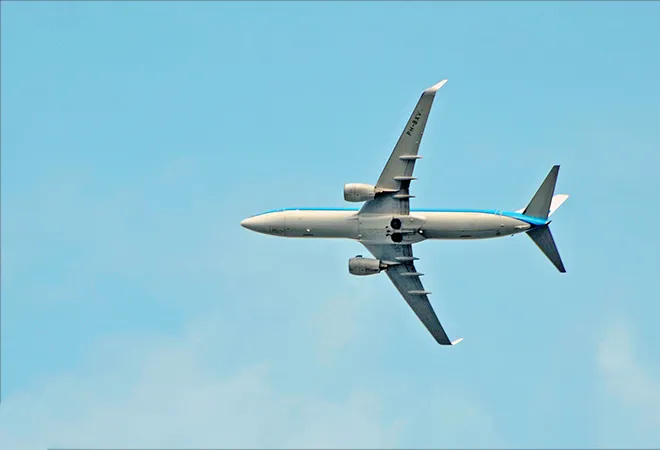
“If it Ain’t Boeing, I Ain’t Going,” not long ago were the prophetic words used by aviators, pilots and flyers to immortalise Boeing’s aircraft safety standards and build quality. A quick look at 2020, Boeing not only has had problems with quality, leading to two fatal air crashes of brand new MAX 737 Jet, by the onset of the pandemic, Boeing was also in talks with the White House for a $50 billion loan to support its vast network of supply chain manufacturers. Its stock hit turbulent weather losing more than 25% value. Airbus has equally suffered in with cancellation of orders worth several hundred aircrafts putting in jeopardy a vast array of jobs that power the European economy. Airbus CEO Faury in letter to a staff said “the plane maker was bleeding cash at an unprecedented speed,” and had lost about a third of its business after scaling back production in response to the pandemic.
Boeing and Airbus, together, supply 90% of the worlds commercial aircraft with the EU region earning nearly €94 billion and the $122 billion in exports. Aerospace jobs are some of the highest paying with majority of the workforce employed is in the massive supply chain of big international companies such as Honeywell, Pratt & Whitney, MSMEs and boutique companies providing niche and critical components. The Teal Group estimates that the annual turnover of the aerospace industry at $1 trillion making it strategic in nature. The aerospace industry which is the main supplier products to the aviation sector has come to a grinding halt, as the pandemic sweeping the globe has put an end to all forms of air travel. IATA has estimated the job loss in the aviation sector to be at 2.9 million.
Aerospace jobs are some of the highest paying with majority of the workforce employed is in the massive supply chain of big international companies such as Honeywell, Pratt & Whitney, MSMEs and boutique companies providing niche and critical components.
As per CII “the global commercial aircraft fleet was expected to grow at a CAGR of 4% during 2016-2035 with Boeing projecting a need for over 39,600 aircraft and Airbus at 33,070. On an average, around 42% of the demand was for replacement of the existing aircraft with a 58% incremental growth. Majority of these deliveries was slated to be around the Asia-pacific region, with India, China, Southeast Asia and the Middle East being key markets for the global aircraft majors.” This pipeline was projected to generate approximately $7 trillion. With the onset of the pandemic, most of the order book for new aircrafts stand cancelled or deferred indefinitely.
The effect of the COVID-19 pandemic has been catastrophic on aerospace manufacturing. A large number of MSME suppliers to the aerospace majors will be shut down permanently. It is now anybody’s guess as to what the aviation industry will look like once the lockdown is lifted. In the post pandemic scenario, travelers will have to learn to deal with social distancing, hygiene, red alert related standard operating procedures. Business travel at the drop of a hat may become a thing of the past, with meetings, conferences, etc., being conducted virtually, tourism is unlikely to pick up during the short to medium term.
A large number of MSME suppliers to the aerospace majors will be shut down permanently. It is now anybody’s guess as to what the aviation industry will look like once the lockdown is lifted.
How does India factor into the equation?
China and India are two of the world’s largest consumers of aerospace products, with some of the biggest purchase orders to date. Indian aviation was one of the fastest growing sector before the pandemic hit, Indigo and Spice Jet had announcing to plans to buy a total of 400 jets. India was expected to add nearly 2,000 new aircrafts to its existing fleet by 2030. The Government of India had been on an over drive with liberalising reforms and initiatives in the aviation sector. Industry friendly MRO policy, low cost air travel under the UDAN scheme and a programme to upgrade nearly 200 airports had been put in place. It was estimated that the MRO segment would have grown at 10% and generated $2.6 billion by the year 2021. Commercialisation of the national carrier Air India had become a top priority.
The disruption in production due to lack of demand for aircraft is likely to hit the Indian aerospace sector hard. With the announcement of lockdown, Karnataka and Tamil Nadu governments did take proactive measures and issued orders allowing aerospace and defence industries to continue manufacturing, but with the nation-wide lockdown and the absence of governmental coordination prevented even a limited return to normalcy. As a result of which aerospace majors put enormous pressure on vendors with the right to evoke, the right to remedy. Indian aerospace companies are concerned that a failure to honour existing contracts could result in non-renewal of contracts. The Indian aerospace sector cannot afford to have a change in perception as a trust worthy supplier under pressure.
Indian aerospace companies are concerned that a failure to honour existing contracts could result in non-renewal of contracts.
Now is time for India to rise to the challenge and be the leader in the opening up of the aviation sector. It can start by opening up the domestic aviation sector with sensible SOPs in place. It should open up travel for business across all major routes and in coordination with state governments and put in place last mile connectivity for passengers travelling to cities and areas that are still under complete or partial lockdown. The MoCA in order to give a boost to the airline industry can consider bringing down the parking charges at airports, reduce navigation fees and bring aviation fuel within the ambit of the GST, this will give the airlines a head start. India with its size and the economy of scale can make a significant impact on the aviation and aerospace industry. The price of crude and aviation fuel is at the rock bottom providing the most opportune moment for the government to arrange for super tankers that can be filled with aviation fuel and parked after existing reserves have been filled up to capacity. This will subsidise airline operations in a big way when they are running are well below capacity.
With regards to manufacturing, indigenous programmes such as the NAL-SARAS light transport aircraft must be speeded up and Mahindra’s 10 seater Airvan should be given opportunities as a short haul operator. Development of the indigenous regional jet aircraft must find new vigour that consolidates the entire domestic aerospace ecosystem. As India moves forward to put in place a universal healthcare plan for all its citizens, it will soon find lesser money available to pay foreign vendors for the purchase of fighter aircrafts and gunships, etc. India will have to reprioritise, spend and source more from domestic programmes such as the HAL Tejas, Rudra, ALH, numerous missile programmes that come under the aerospace sector. It will be a boon to the domestic aerospace companies if the 114 fighter jet procurement is an all Indian affair. Similarly, aircraft required for naval carriers must also be procured from Indian vendors, the naval version of the Tejas is nearing completion. There should be a moratorium on the purchase of aerospace products from foreign OEM if the capability exits in India.
Development of the indigenous regional jet aircraft must find new vigour that consolidates the entire domestic aerospace ecosystem. As India moves forward to put in place a universal healthcare plan for all its citizens, it will soon find lesser money available to pay foreign vendors for the purchase of fighter aircrafts and gunships, etc.
The Centre and State governments must not leave any stone unturned in attracting aerospace companies that are looking for a way out of China. They must provide quality infrastructure in terms of power, labour and IP protection based on international best practices. There are a number of foreign aerospace companies with niche capabilities that are struggling and are looking for a way out of pandemic mess. Such struggling companies must be identified, Buyouts and JVs entered into. China built a significant part of its domestic aerospace capability based on buyouts of struggling companies. Case in point, China’s JV and investment in Antonov 225 production line and now its plan to buy Embraer after Boeing reneged on the deal. India must bid for Embraer, GoI along with Indian corporates must fight for once in a life time opportunity such as this.
For the first time in the history of aviation there are more UAVs performing a variety of roles monitoring the pandemic. MoCA and the DGCA which have been proactively trying to come up guidelines for UAV operations must now go a step further and integrate UAVs into the national airspace. Young Indians have a unique opportunity to hone their skills and develop the UAV sector into a world beater. This is the most opportune time to integrate AI, machine learning and cloud computing into UAV technology. The DGCA and MoCA must give the UAV sector equal importance as they have traditionally given the manned aviation sector. This momentum cannot be forgotten and the regulator has to be proactive in keeping pace with the changing technology. The unmanned sector will not replace the losses suffered by the aviation industry, but it will be an investment for the future, for the future will be unmanned.
The views expressed above belong to the author(s). ORF research and analyses now available on Telegram! Click here to access our curated content — blogs, longforms and interviews.




 PREV
PREV


